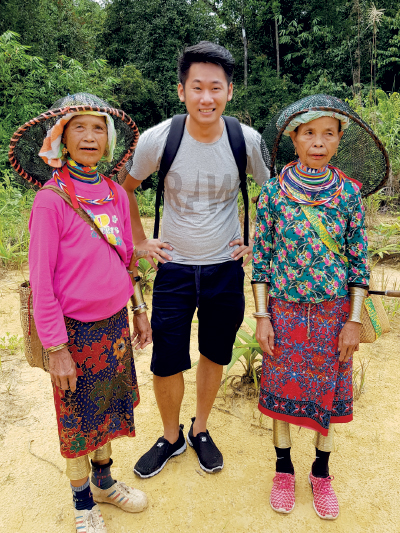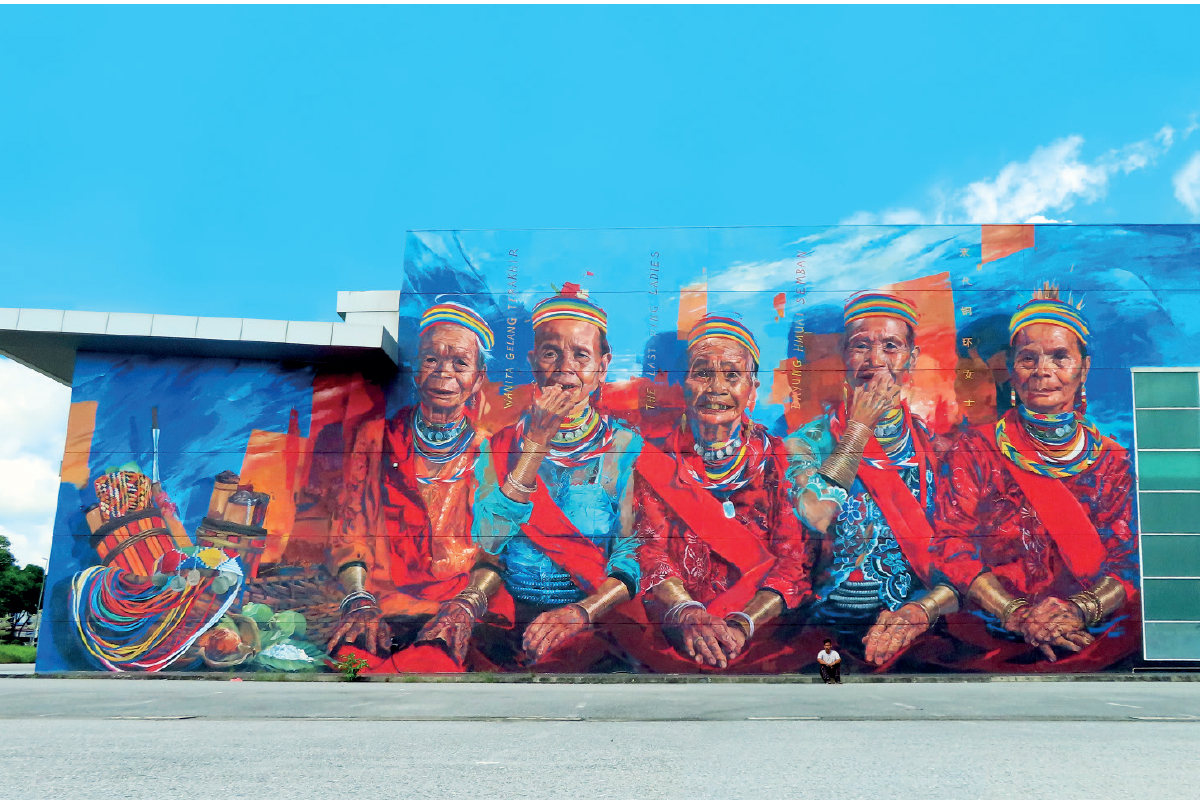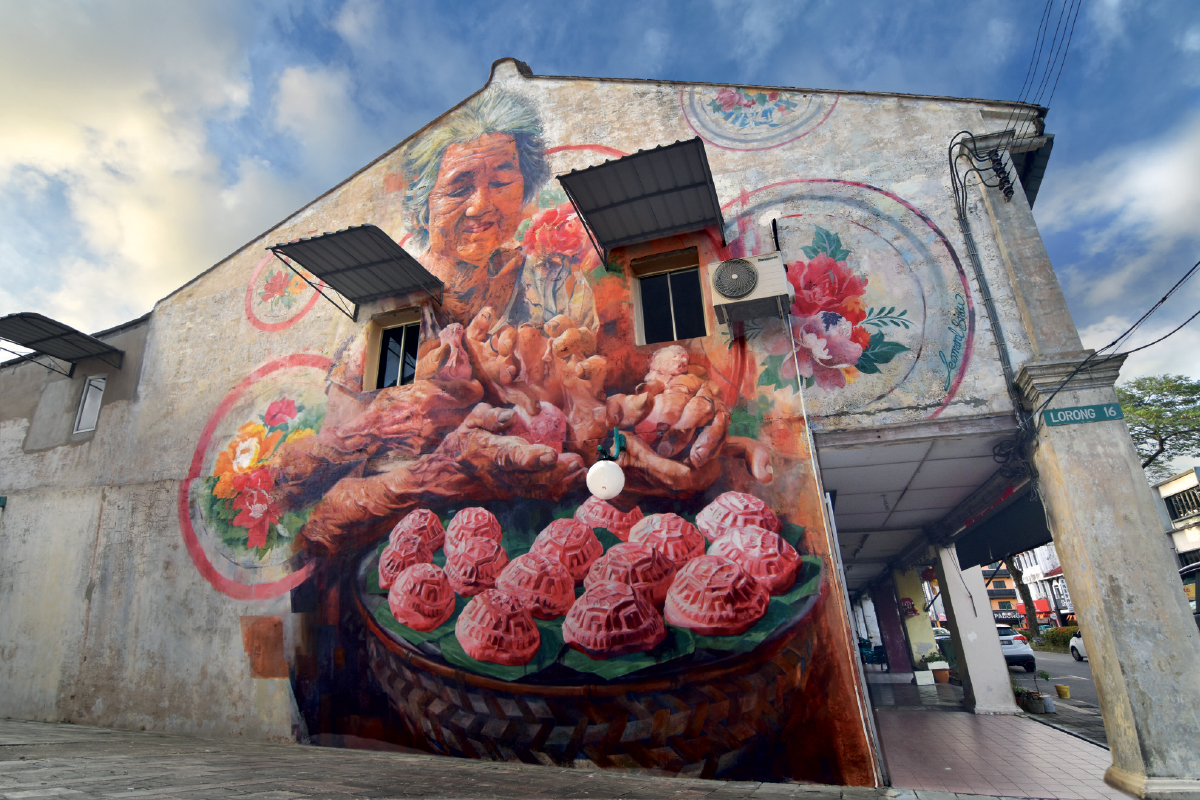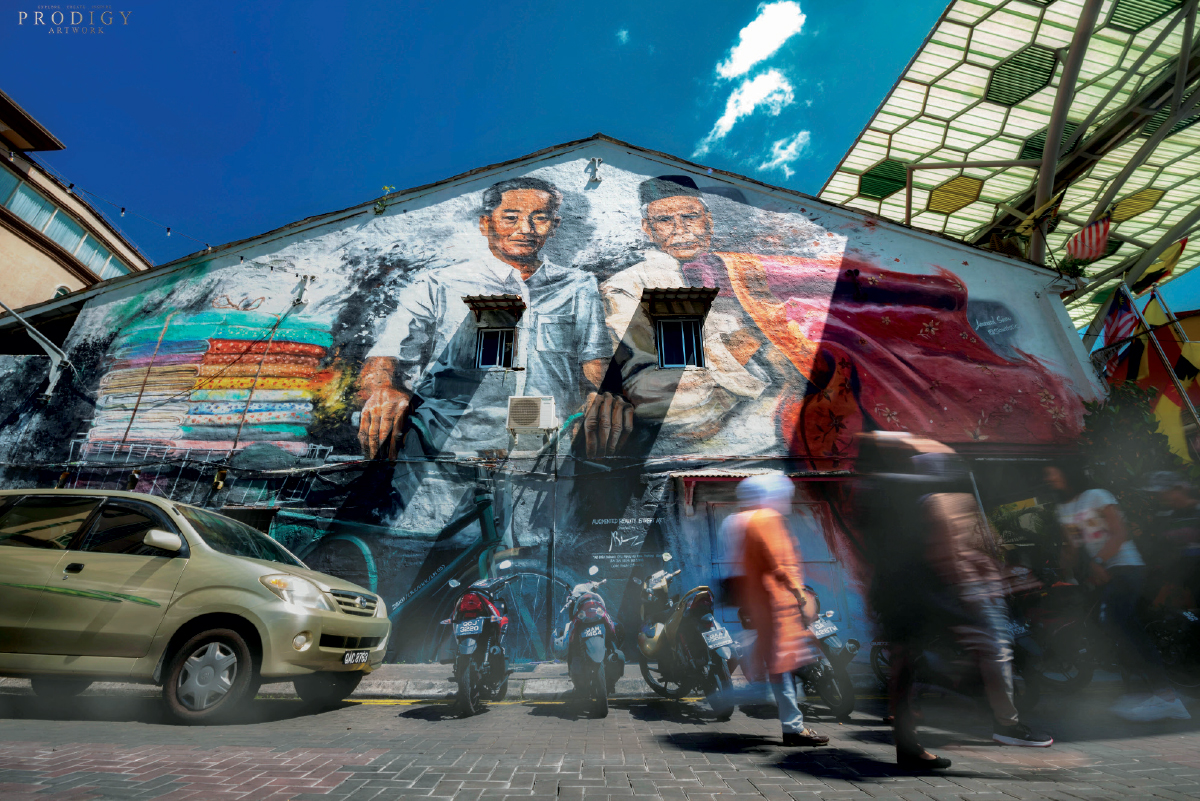
This article first appeared in City & Country, The Edge Malaysia Weekly on June 12, 2023 - June 18, 2023
Wandering around the streets of downtown Kuching, it is hard to miss the colourful and engaging street art that adorns the walls and sides of buildings in the old quarter. Many of these murals, which have become tourist landmarks over the years, were painted by Kuching-born muralist Leonard Siaw. In 2018, he became the first Malaysian artist to earn a spot in Australia’s iconic Benalla Street Art Wall to Wall Festival with his work entitled Fishing Fun.
While the nature of street art is arbitrary, Siaw’s works are very much based on real people or events with many telling stories of lost or dying trades in Kuching. “I started painting in India Street before moving to [Kuching] Waterfront, China Street, Carpenter Street and now Padungan. I get my inspiration from mingling with the old folks who live in those streets, including the shop owners. They tell me stories of old, their childhood, experiences and things that can no longer be witnessed by the current generation. Rickshaws and bullock carts are some examples, as well as old businesses like tinsmithing, which is a dying trade,” Siaw tells City & Country in an online interview.
He explains that unlike commercial murals, a lot of his projects are commissioned by the city council or Ministry of Tourism to brighten up less vibrant areas and back lanes. “The client provides a rough brief and I am given artistic freedom to come up with a visual to paint on the buildings. This requires trust in our experience from those who approach us.”
Previously a graphic designer, the self-taught street artist switched his keyboard and mouse for rollers and brushes in 2016. “I worked as a graphic designer for five years. The income was stable and I felt safe but something was missing. I loved drawing, painting and colouring as a child and enjoyed drawing Hong Kong-style comics like Fung Wan and Dragon Tiger Gate. So when I was working with a keyboard and mouse, it made me wonder if I was moving away from doing what I wanted. After struggling for some time, I decided to become a full-time muralist. It was a bold move but I told myself to go for it. The worst thing that could happen was that I would have to go back to being an employee. There was nothing to lose.”
“I faced a lot of challenges initially because I didn’t know how to create proper street art that had depth, meaning and concept, and which reflected the society, the city and its culture. These things must be depicted if I really want to deliver quality street art,” he says.
Colours of cultural heritage
Some of Siaw’s noteworthy works include The Last Ring Ladies in Kota Padawan, which features five of the last ring ladies from the Bidayuh sub-tribe of Semban decked out in their traditional regalia, comprising coiled copper rings worn on their forearms and calves.
“Before I delivered this art, I visited their resettlement to experience and observe how they go about their daily lives … from how they eat, play music, dance, cook with fire, make handicrafts and enjoy the river, to how they roam the uneven mountainous terrain even with all those rings on their forearms, calves and headgear. I was really impressed.
“Language was a really big barrier but from the way they made eye contact to their smiles, I could sense that they had so much to share, so many stories and experiences. That inspired me to paint The Last Ring Ladies, which aims to reflect their soul, culture and way of life into a mural,” he says.
The Birth of the Labour Frontier is one of Siaw’s most detailed completed works to date. Located at the famous split mung bean dessert hawker stall at Upper China Street, off Carpenter Street, this mural depicts the suntanned workers at the Kuching wharf when Sarawak was a British colony, between 1946 and 1963.
“This project, a collaboration with the Kuching Old Bazaar Association, was pretty interesting. To visualise the past, I got some models to dress up as labourers in white singlets and shorts to pose like they were [doing manual work] or resting under the hot sun, for me to photograph and arrange into a visual for this artwork,” he says.
As for The Original Flame in Kai Joo Lane, Siaw explains that the mural depicts the back lane’s street vendors back in the 1960s. “The man on the left was the chicken porridge seller, the lady in the middle was known for her taufufah, and the man on the right sold sotong bakar ketuk. The chicken porridge and taufufah businesses are being run by the current generation. For this mural, I depended on the photographs [of the original vendors] that were passed to me by their children as they are no longer alive,” he says.
One of Siaw’s earliest works, The Early Mercers in India Street, highlights the history of textile trading in Kuching in the 1930s and features two pioneer textile traders, Wee Aik Oh (the grandfather of Kuching South mayor Datuk Wee Hong Seng) and Salih Ahmad. “This piece basically kick-started my street art journey back in 2018,” Siaw remarks.
Some of his other notable works include The Exchange & The Abandoned Craftsmanship in Ewe Hai Street, which portrays the trading of Bornean products between the Chinese and indigenous people as well as the lost craft of clog making; Symphony of the Tinsmith in China Street, which features the tinsmithing industry, a lucrative business in the past but a sunset industry in today’s world; and Red Tortoise Cake in Padungan, which features local artisanal ang ku kueh maker Goh Beng Choo, fondly known as Aunty Goh, making her signature traditional Chinese snack.
According to Siaw, these murals serve as reminders of the city’s past and its roots. “Because life can get busy, we tend to miss out on a lot of details. So to me, personally, street art reminds me of our ancestors, their lives and their struggles. Symphony of the Tinsmith, for example, brings back memories of my late grandfather who was a tinsmith.
Street art also adds soul to the environment it is in, he adds. “Street art is a direct form of storytelling. I like to depict the lost or dying trades of a city in general. Street art has taught me a lot and made me realise how little I know about the city. I was also told by the younger generation that they would not have been aware of such trades and the city’s past if not for these murals. That was really good to hear. I also hope these will inspire young artists.”
Siaw has also made his mark in Penang with projects like the Building Yourself mural painting in Ikea Batu Kawan for an arts mentorship programme; The Joy of Harvest container art painting in Balik Pulau, which pays homage to farmers; as well as The Taste of Nostalgia in Ayer Itam, which features the Siam sisters of the renowned Sister Curry Mee.
Currently, Siaw is working on his most detailed work yet, on a canvas, at La Promenade Mall in Samarahan, Kuching. “This is a 50ft by 10ft canvas, of which I have not revealed much in my social media yet, and which depicts life in the old town back in the 1940s and 1950s. I use Kuching Main Bazaar’s heritage area as a reference, but it can also apply to similar cities like Petaling Street in KL, George Town in Penang or even places like Melaka or Singapore.
“This is the biggest canvas that I’ve done so far and is a lot more detailed than my previous works, including The Birth of the Labour Frontier. This is my own artwork, not commissioned, and it is an ongoing painting that is displayed in the mall, so people get to see it progress until completion,” he says, adding that this piece is curated by Hoan Gallery.
The fleeting nature of street art
As mural paintings can take months to complete and typically last about five years, a common question raised by clients is the cost of repairing or reviving a mural, says Siaw. “Murals will fade, and the cost of repairing a mural will be the same as, if not more, than the cost of painting a new one due to the scale of it. So when clients ask me, I typically suggest painting a new mural.”
An outdoor mural of two to three storeys high, like The Last Ring Ladies, took Siaw three months to complete. “They last about five years before they start to gradually fade. It very much depends on the wall condition and the quality of the paint.
“From a different perspective, the transient nature of a mural is what makes it so interesting and unique. Street artists understand that our work is fleeting and not meant to last forever. If you really want to preserve them, just capture them with your cameras,” he adds.
The challenges Siaw has to contend with as a street artist are mainly weather and safety issues when painting outdoors. “There are fewer challenges when working indoors. Outdoors, we need to basically be careful when climbing ladders, put on a safety harness when working on a skylift, and protect ourselves from UV rays. And when there’s heavy rain, work has to stop.”
When asked if he has a favourite mural among those he has painted, Siaw says he does not. “Every mural I deliver takes a lot of energy, time and effort, and although I am satisfied with how they turned out, I do see room for improvement. So instead of picking a favourite, I’d say that every mural I paint is practice for my next mural.”
While the future is unknown to Siaw, his focus will remain on Sarawak. “Sarawak is full of endless and untold stories, which are an inspiration to me. I might go to Sibu, Miri or Kapit; I don’t know yet. I’ll just let artistic fate take me wherever it wants,” he says.
Save by subscribing to us for your print and/or digital copy.
P/S: The Edge is also available on Apple's App Store and Android's Google Play.







